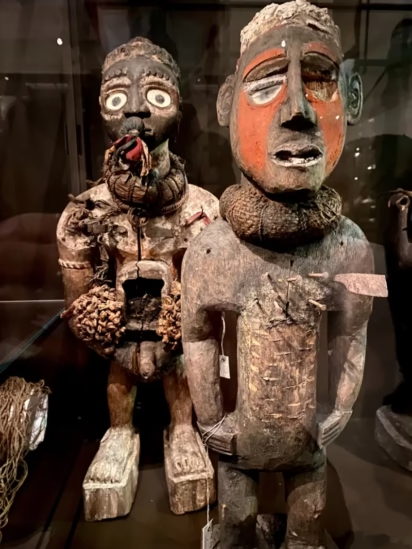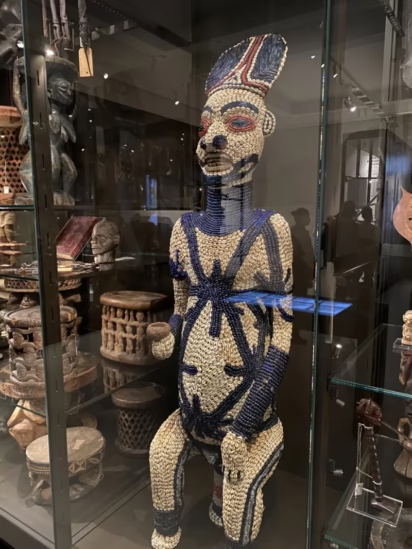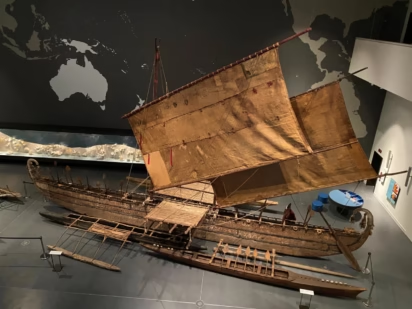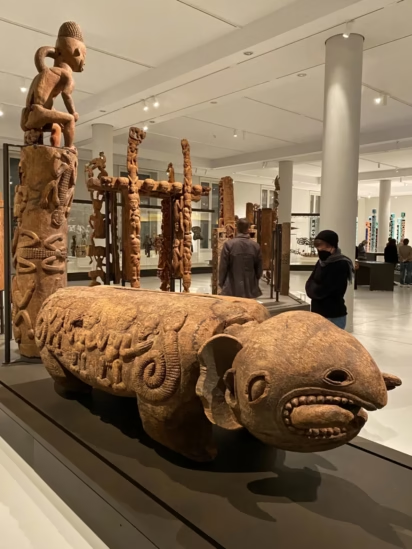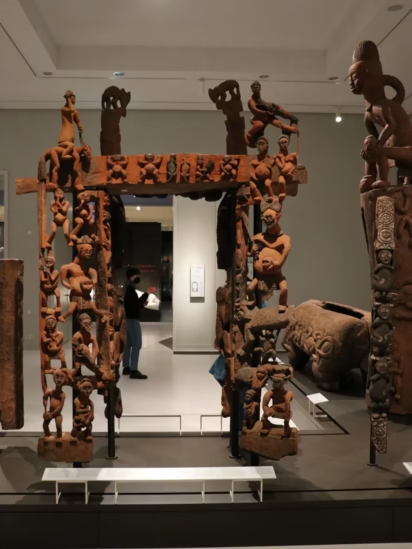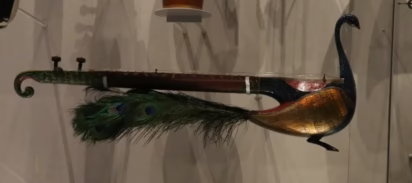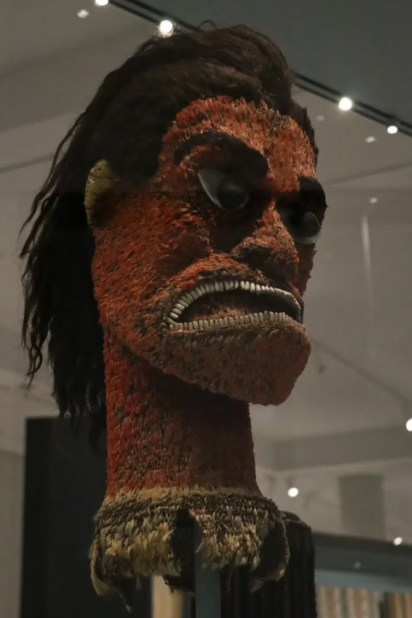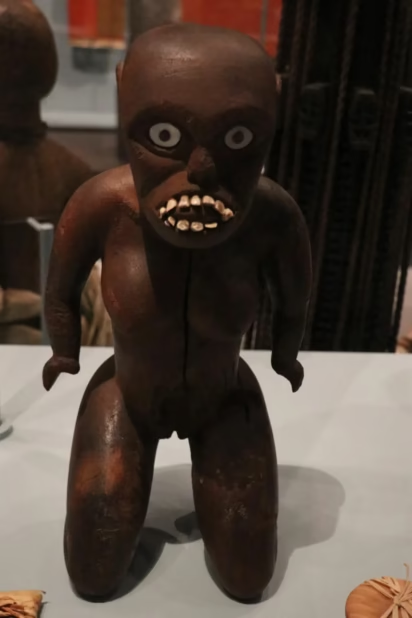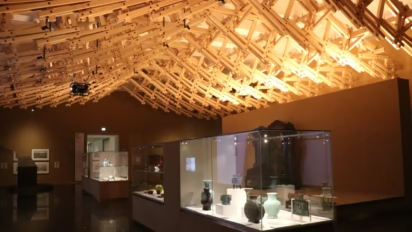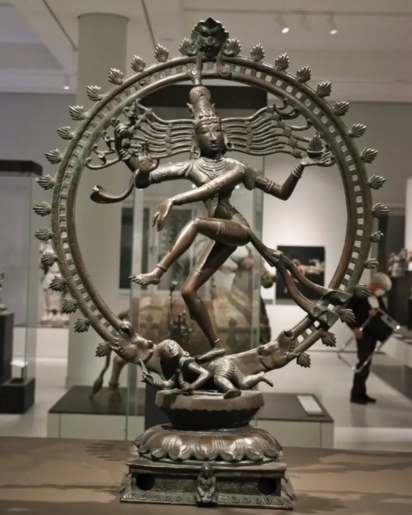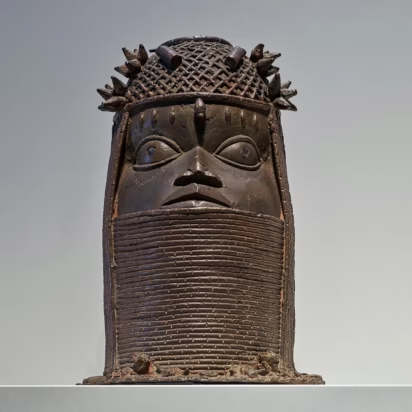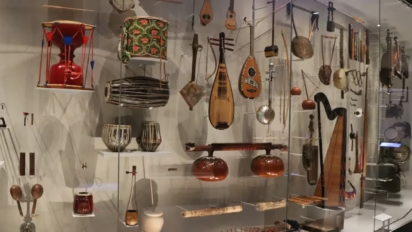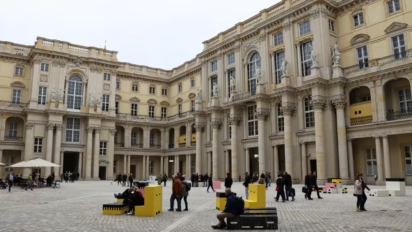The vast collections of the Ethnological and Asian Art Museums in Berlin are displayed in a new permanent exhibition in the Humboldt Forum (Berliner Schloss).

The Ethnologisches Museum (Ethnology Museum) and Museum für Asiatische Kunst (Asian Art Museum) opened in the Humboldt Forum (Berliner Schloss) partly in September 2021 to display the world-class collections of the Staatliche Museen zu Berlin. The full museum opened in September 2022 to allow for around 20,000 items to be on display in the permanent exhibition with a further variety of temporary displays. Admission is currently free and time-slot reservations are not required essential.
Ethnological Collection in Berlin
The Ethnological Collection of the State Museums in Berlin (SMB) is amongst the largest and most important in the world. It consists of around 500,000 artifacts, 500,000 media items (photos, video, audio recordings), and 200,000 pages of written notes.
Many of the items in the museum were collected during the 19th and early 20th centuries — often during the less-than-glorious German colonial period but many items are also from regions never colonized by the Germans. Much more attention than previously is given to explaining the provenance of items on display and modern works are occasionally placed in contrast to historical items. In some cases, modern works are displayed together with historic items.
Ethnologisches Museum (Ethnology Museum) in Berlin

The ten exhibition halls of the museum that opened in 2021 are described below — a short summary by the SMB of the new sections is included further down:
Schaumagazin Africa
Items such as wooden statues and masks from especially West Africa are exhibited here as if in a museum warehouse. The upside is that many items could be displayed; the downside is that descriptions are cryptic and often only the region of origin. A few similar showcases are used elsewhere in the museum too.
Oceania: Human and Sea
Several boats from Oceania were preserved but a disappointment is the inability to explain how the people of Oceania managed to navigate the seas in such small vessels — the knowledge was lost when more modern techniques and technology were introduced and current research is still unable to reproduce these skills.
The large outrigger boat from the island of Luf (Bismarck Archipelago, Papua New Guinea) is one of the highlights of the museum — it was placed in position during the construction of the building as it would not be possible to move in one piece after completion of the Schloss.
Cameroon
Wood-carved items are a major attraction of the Cameroon hall. Huge wooden drums are impressive but so are the wood-carved door frames and other architectural details. Further displays include royal thrones and commemorative items used in a variety of ceremonies.
(Kamerun was a German colony from 1884 to the First World War.)
Sounds of the World
Not much to see here — in this space visitors are invited to relax and simply enjoy sounds from all over the world being played automatically. (A few video screens too but the emphasis is on the audio here.)
Many interesting instruments from all over the world are displayed on the outside of the sound space — the instruments from the Indian region are particularly interesting and colorful. (For more traditional European instruments, visit the magnificent Musical Instruments Museum in the Kulturforum area.)
Oceania: Rituals and Beliefs
A variety of items used especially in religious rituals are on display from the larger Oceania area, including from Hawaii. A top attraction here is the ‘Ahu ‘ula Feather Coat that Hawaiian king Kamehameha III gave to Prussian King Friedrich Wilhelm III in 1828.
Asian Art Museum in Berlin

The Museum für Asiatische Kunst (Asian Art Museum) on the third floor of the Humboldt Forum in Berlin exhibits items from the museum’s large and varied collection of items from all parts of Asia. Items range from archaeological artifacts to modern art.
The East-Asian Art Collection covers art from China, Korea, and Japan. Highlights include Japanese paintings and lacquerware, Chinese ceramics from the Neolithic period to the 15th century, folding screens, paintings, woodcut prints, and of course calligraphy scrolls.
The Collection of South, Southeast, and Central Asian Art includes items from the 4th century BC up to the present day. This vast geographical region encompasses India, Pakistan, Afghanistan, Sri Lanka, Bangladesh, Nepal, the autonomous regions of Tibet and Xinjiang of the People’s Republic of China, the southeast-Asian countries of Myanmar, Thailand, Cambodia, Vietnam, and the Indonesian archipelago. Religious art, especially Buddhism, Hinduism, and Islam, plays a major role in the collection.
The around ten halls opened in 2021 cover mainly:
- Religious art from South Asia — including Hinduism and courtly art
- Northern Silk Road — The Turfan Collection of murals, paintings, and sculptures from the Northern Silk Route
- Art from Japan, including a tatami tea house where tea ceremonies are conducted
- Religious art from East Asia
- Art from China and Korea
- China and Europe — especially porcelain produced for the European market
As with the Ethnology Museum, the Asian Art display doubled when the full Museum für Asiatische Kunst opened in September 2022.
New Galleries in the Berlin Ethnological and Asian Art Museums Opened in 2022

Highlights from the new sections of the museum that opened in September 2022, as described by the SMB, include:
Galleries focusing on North, Central, and South America as well as the second part of the collection display on Asia and Africa with highlights such as the exhibition segments on the global diversity of Islam and the Kingdom of Benin. The new displays cover a wide range of subjects, from the collecting activities of Norwegian explorer Johan Adrian Jacobsen along the West Coast of Canada to Indigenous perspectives on the objects in Berlin to the lives of things in the Amazon region.
Two galleries are devoted to art from the historical Kingdom of Benin. On view are historical works which used to be part of the Berlin collections and remain in Berlin as loans after having been recently returned to Nigeria. The famous “Bronzes” are juxtaposed with contemporary art from Nigeria.
A traditional meeting house (bai) from Palau, a Fijian double-hulled boat (drua), the famous golden cacique of the pre-Columbian Quimbaya, and the monumental Cotzumalhuapa steles from present-day Guatemala are among the stand-out exhibits. Examples of the art of the Khmer include historical casts of the reliefs of the Angkor Wat temple complex with scenes of heaven and hell, which stretch 23 meters across the gallery. The spectacular reconstruction of the Buddhist “Cave of the Ring-Bearing Doves” gives visitors an impression of the religious architecture along the Northern Silk Road.
In the exhibition segments on the global diversity of Islam, visitors encounter a rare Iranian Dervish robe from the nineteenth century as well as showcases with displays arranged by mosque communities in Berlin.

At various points, the exhibitions include contemporary artistic interventions which directly relate to the collections or are the result of engagement with them. The large-scale installation Codex Humboldt Fragment 1 / Codex Azoyú Reverso by Mexican artist Mariana Castillo Deball, for example, visualizes the contents of two major Mesoamerican illuminated manuscripts from the sixteenth century using 320 ceramic plates.
Ethnological and Asian Art Museums Berlin Visitor’s Information

Admission to the Ethnologisches Museum (Ethnology Museum) & Museum für Asiatische Kunst (Asian Art Museum) in the Humboldt Forum (Berliner Schloss) is currently free and time-slot reservations are not essential. Reservations are easily made for free online or enquire at the ticket desks on the ground floor of the Humboldt Forum. (The admission is likely to eventually be around €10/12 in line with other major museums in Berlin.)
The two museums are currently treated as a single visit so only one reservation is required. The two museums are, however, physically separate with the Ethnology Museum on the second floor and the Asian Art Museum on the third floor.
The various museums and exhibitions inside the Humboldt Forum (the rebuilt Berliner Schloss / Palace) are individually managed and charged separate admission fees. Tickets for all are available at Humboldt Forum — the Berlin Museum Pass may be valid at some museums but not the Museum Island Welcome card.
Admission to the Humboldt Forum building, including the impressive Schlüterhof courtyard, and to some of the smaller exhibitions is free.
Opening Hours
The opening hours for the Ethnology and Asian Art Museums are long like the rest of the Humboldt Forum — note the museums here are closed on Tuesday but open on Monday.
Opening hours are 10:00 to 20:00 — Wednesday to Monday, closing at 22:00 on Friday and Saturday.
Ethnological and Asian Art Museums in the Humboldforum in Berlin
The Humboldtforum is the rebuilt Berlin Palace (Berliner Schloss) of the Prussian kings. The exterior was largely reconstructed according to the appearance of the original Baroque palace that was destroyed by the East German regime after the Second World War. It is on the southern side of Berlin’s popular Museumsinsel across the square from the Altes Museum and the Berlin Cathedral.
Buses 100 and 300 stop directly in front of the Berliner Schloss at the Lustgarten stop and the new U-Bahn station Museumsinsel is directly next to the palace.
More on the Berlin State Museums (Staatliche Museen zu Berlin):
Note new opening times for many Berlin museums in 2025 — several are now closed on both Monday and Tuesday.
Timeslot reservations are sensible (and sometimes needed in busy periods) for the Alte Nationalgalerie, Gemäldegalerie, Neue Nationalgalerie, Neues Museum, and Pergamon – Das Panorama. (The Pergamon Museum itself is closed until 2027!). Timeslots are released only a few weeks in advance. Online tickets are available from GetYourGuide or SMB.
Many passes and multi-museum tickets offer savings (Kulturforum / Museums Island). Individual museum ticket prices range from €8 to €14 (€20 for special exhibitions). Online tickets are skip-the-line — go directly to the gallery entrance to scan the code.
For more general information on the Berlin State Museums:
- Top National Museums and Galleries in Berlin (brief overview)
- Berlin State Museums: What Is Seen Where? (a short description of the collections in the different museums)
- Opening Hours of Berlin State Museums (2025) — major changes since mid-April 2024!
- Ticket Prices for Berlin State Museums (prices for museums, temporary exhibitions, combination tickets, online time-slot reservations). Buying online from GetYourGuide is easy. A ticket with a QR or bar code is scanned directly at the entrance — no need to pass by the ticket desk (but pick up the free audio guide before entering).
- Save with the Berlin Museum Pass – 30 museums (including all the SMB museums) in three days for €32 – a fantastic savings deal.
- Staatliche Museen zu Berlin (official website in German & English).
News & Temporary Exhibitions in Berlin in 2025:
- 2025: Top Special Art Exhibitions in Berlin in 2025 & Top Contemporary Art Exhibitions in the Hamburg Bahnhof.
- Museums closed in 2025: The Pergamon Museum is closed until 2027 (some sculptures are on display in Das Panorama), the Museum Berggruen is closed until 2026 (much of its collection is traveling the world), the permanent collection of the German History Museum (Zeughaus) is closed but temporary exhibitions continue in the Pei Building.
More Museum Reviews and Museum-Specific Information:
- Alte Nationalgalerie — 19th-century art.
- Altes Museum — Greek, Etruscan, and Roman art.
- Bode Museum — sculptures from the Middle Ages, Gothic, Renaissance, Baroque, and Classical periods, Byzantine Art, and coins.
- Ethnological and Asian Art Museums in the Humboldtforum.
- Friedrichswerdersche Kirche (free admission) with a collection of 19th-century German sculptures.
- Gemäldegalerie — German and Dutch Old Masters and Italian paintings.
- Kunstgewerbemuseum (Decorative Arts).
- Musical Instruments Museum near the Berliner Philharmonie.
- Neue Nationalgalerie — 20th-century art.
- Neues Museum — Pre and Early History, Egyptian Collection with bust of Nefertiti.
- Pergamon Museum with Ishtar Gate — the whole Pergamonmuseum is closed from 2023 until 2027. Some Greek sculptures are shown in the
- Pergamon Museum Panorama Exhibition with Asisi panoramic painting and Greek statues.
- Photography — Helmut Newton collection and historic photos.
Previous Temporary Exhibitions in Berlin Museums:
- 2024: Overview of Top Berlin Exhibitions in 2024, Caspar David Friedrich in the Alte Nationalgalerie, Frans Hals in the Gemäldegalerie, Neue Nationalgalerie (20th-century art) Hamburger Bahnhof Contemporary Art, Kupferstichkabinett (Prints and Drawings), and Photography Museum.
- 2023: Top Special Temporary Exhibitions in 2023 — overview, in the Kulturforum, in the Neue Nationalgalerie, on Museum Island, and the Museum of Photography.
- 2022: Top Special Temporary Exhibitions in 2022 — overview, in the Kulturforum (David Hockney), in the Neue Nationalgalerie, on Museumsinsel, Hamburger Bahnhof contemporary art, and the Museum of Photography.
- 2021: Top Special Temporary Exhibitions in 2021 — including the reopening of the Neue Nationalgalerie, as well as the Ethnological and Asian Art Museums in the Humboldt Forum.
- 2020: Highlights, in Kulturforum, on Museum Island, in the Hamburger Bahnhof, smaller museums, and the opening of the Humboldt Forum.

